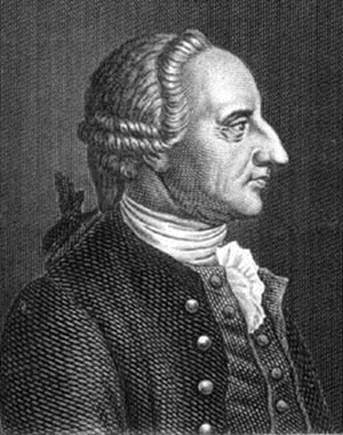

تاريخ الرياضيات

الاعداد و نظريتها

تاريخ التحليل

تار يخ الجبر

الهندسة و التبلوجي


الرياضيات في الحضارات المختلفة

العربية

اليونانية

البابلية

الصينية

المايا

المصرية

الهندية


الرياضيات المتقطعة

المنطق

اسس الرياضيات

فلسفة الرياضيات

مواضيع عامة في المنطق


الجبر

الجبر الخطي

الجبر المجرد

الجبر البولياني

مواضيع عامة في الجبر

الضبابية

نظرية المجموعات

نظرية الزمر

نظرية الحلقات والحقول

نظرية الاعداد

نظرية الفئات

حساب المتجهات

المتتاليات-المتسلسلات

المصفوفات و نظريتها

المثلثات


الهندسة

الهندسة المستوية

الهندسة غير المستوية

مواضيع عامة في الهندسة

التفاضل و التكامل


المعادلات التفاضلية و التكاملية

معادلات تفاضلية

معادلات تكاملية

مواضيع عامة في المعادلات


التحليل

التحليل العددي

التحليل العقدي

التحليل الدالي

مواضيع عامة في التحليل

التحليل الحقيقي

التبلوجيا

نظرية الالعاب

الاحتمالات و الاحصاء

نظرية التحكم

بحوث العمليات

نظرية الكم

الشفرات

الرياضيات التطبيقية

نظريات ومبرهنات


علماء الرياضيات

500AD

500-1499

1000to1499

1500to1599

1600to1649

1650to1699

1700to1749

1750to1779

1780to1799

1800to1819

1820to1829

1830to1839

1840to1849

1850to1859

1860to1864

1865to1869

1870to1874

1875to1879

1880to1884

1885to1889

1890to1894

1895to1899

1900to1904

1905to1909

1910to1914

1915to1919

1920to1924

1925to1929

1930to1939

1940to the present

علماء الرياضيات

الرياضيات في العلوم الاخرى

بحوث و اطاريح جامعية

هل تعلم

طرائق التدريس

الرياضيات العامة

نظرية البيان
Abraham Gotthelf Kästner
المؤلف:
A G Kästner
المصدر:
Vita Kestneri
الجزء والصفحة:
...
21-3-2016
1289
Born: 27 September 1719 in Leipzig, Germany
Died: 20 June 1800 in Göttingen, Germany

Abraham Gotthelf Kästner's father was a university professor of jurisprudence. He hoped that his son would follow in his footsteps and Kästner started out on a university course with the intention of studying the philosophy of law, but he soon found other topics more to his liking and began to concentrate more on philosophy, physics and mathematics.
Kästner wrote his habilitation thesis at the University of Leipzig, and was awarded the qualification which allowed him to teach there in 1739. He taught at the University of Leipzig as a Privatdozent until 1746 when he was appointed as an extraordinary professor. Ten years later, in 1756, he was appointed as professor of mathematics and physics at Göttingen where he succeeded to Segner's chair. He was an excellent expositor of mathematics although it is reported that Gauss did not bother to go to his lectures as he found them too elementary. However he did influence Gauss, in particular with his interest in Euclid's parallel postulate.
The paper [5] examines the contribution of Kästner who Sinaceur describes as an important German mathematician of the mid- and late 18th century. Kästner is not famed for original research but rather he was involved in compiling encyclopedias and in writing textbooks. He was concerned with philosophical questions in mathematics and other areas such as logic. However Kästner was quite unenthusiastic about logic, but this is not surprising for a mathematician of this period who was interested in geometry. Despite this he was interested in the philosophy of mathematics and he wrote widely, in long volumes, about theapplications of mathematics to optics, dynamics and astronomy.
Perhaps his two most famous works, both in four volumes, were Mathematische Anfangsgründe and Geschichte der Mathematik (1796-1800). This latter work was intended to form the basis for a history of mathematics. For example Volume 2, published in 1787, is considered one of the standard sources on the history of mathematical optics.
Perhaps the most important feature of Kästner's contributions was his interest in the parallel postulate which indirectly influenced Bolyai and Lobachevsky too. Kästner taught Bolyai's father and J M C Bartels, one of Kästner's students, taught Lobachevsky. Folta writes in [3] about Kästner's work on geometry:-
Kästner [is] among the mathematicians of the 18th century whose broad interests compelled [him] to concern [himself] with the principal problems of geometry. [His] results included new features that more precisely formulated the traditional interpretation of elementary geometry. In fact, [he] began the conscious attempt to make a precise axiomatisation of the fundamental concepts. Kästner, in spite of his rather great inclination for Euclid's Elements, based his version of the axiomatics of geometry in his Kompendium on other principles (e.g., on motions) and attempted both to seize on other fundamental properties (continuity, ordering) and to determine the selection of the parallel axiom as a foundation.
The article [1] gives us a few more details of Kästner's life, which is described in detail in [2] which is an autobiography. Goe writes in [1]:-
Kästner is also known in German literature, notably for his epigrams. He was a devout Lutheran. Kästner married twice and had a daughter by his second wife.
Books:
Articles: